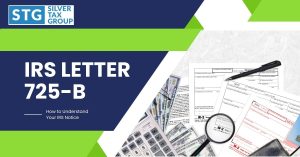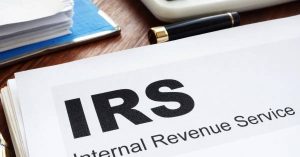The IRS reports that as of the year 2020, Americans owed a whopping $114 billion in back taxes, penalties, and interest. In most cases, the IRS will do everything it can to get that money from taxpayers.
If you’re behind in your taxes or have a big tax bill looming, you might be hoping to find an escape hatch, a way to get out of owing the money in the form of IRS debt forgiveness.
Does the IRS forgive tax debt after ten years, or is this the stuff legends make of?
Since the IRS is in the business of collecting tax dollars, it seems unusual to imagine a scenario of IRS debt forgiveness.
Read on to learn more about what happens when you owe taxes and learn whether there actually is tax debt forgiveness after ten years.
How Long Does the IRS Have to Collect Taxes?
Let’s say you owe the IRS money in back taxes, penalties, and interest. You know you owe money, and the IRS knows you owe money.
How long will they wait for you to pay what you owe? Internal Revenue Code section 6502 says you have ten years to pay your debt. Then if the debt isn’t paid, they write it off.
Will the IRS tell you this upfront? It’s not likely. This is called the 10-Year Statute of Limitations.
While it is an IRS rule per se, it isn’t quite as simple as just don’t pay your back taxes for ten years, and then the bill will go poof and disappear.
In theory, that’s what the IRS rule says. In practice, though, it’s a little bit more complicated. First, the IRS isn’t all that likely to share this rule. In fact, most people aren’t aware it exists.
Second, you might think as a way out, you can just not pay until the ten years is up. The IRS is in the business of collecting money. They aren’t going to sit back in their chair while you hope to wait them out. They will use whatever tactics are available to them to get the money they’re owed.
Tax Debt Forgiveness After 10 Years
Does the IRS forgive tax debt after ten years?
Let’s begin by considering the 10-year period. This 10-year clock starts from the time tax being owed is assessed.
So, you may owe $5,000 in taxes from 2018. If you filed an extension and didn’t actually get your taxes filed until close to 2020, that’s when the owed gets assessed.
This means the tax clock of 10 years starts then.
From that point forward, you technically have ten years to get the debt paid to the IRS. Could it go longer? The short answer is yes, but not because you want to stall.
There are several reasons why the IRS may stop and start the 10-year clock. You can’t get the clock to stop on your own without the help of the IRS.
There are some scenarios where the IRS might actually extend the time period. Let’s say you owe back taxes and enter into an installment agreement with the IRS.
This agreement has you making installments on past-due taxes over time. The IRS can choose to keep the window open while you make those installment payments.
You should prepare to sign paperwork allowing the IRS to collect the debt past ten years. The rule does say, however, that they can’t extend beyond an additional six years.
Tolling the Statute of Limitations
There are some scenarios where the IRS lifts the 10-year statute of limitations, like the previous example. This is called Tolling the Statute of Limitations.
There are some times when dealing with IRS that they hit pause on the 10-year clock. This is not the same as extending the time period they have to collect.
Instead, typically, it means something is happening with your case that merits the time clock pausing. The IRS might use the Tolling the Statute of Limitations for scenarios like:
- Filing bankruptcy
- Filing an Offer in Compromise
- Filing appeals
- Filing lawsuit against IRS
- Out of the country for at least six months
- Signing waiver to extend CSED (more on this shortly)
- Military deferments
After one of these events, the 10-year clock will start ticking again. It doesn’t always start immediately following one of these events.
For example, if you file for bankruptcy, it can take up to an additional six months before the settlement is in place and the clock starts again.
It’s interesting to note that if the 10-year window expires, the IRS won’t send you a notification. If the 10-year mark passes by, it’s the taxpayer’s responsibility to get confirmation from the IRS. They will not automatically provide it.
If the IRS dismisses your tax debt, you’d need a tax professional to help you get the IRS to provide you with an official Certificate of Release of Federal Tax Lien or a Lien Withdrawal.
Options for Paying Your Debt
If you owe tax debt, simply hoping to make it to the 10-year line may not be your best strategy. It’s worth saying again that the IRS is in the business of collecting money. They are going to work hard at getting you to pay.
If paying tax debt seems daunting, what options do you have?
There are some things you could try in hopes that the IRS is willing to work with you in good faith. Of course, these options may be individually dependent on the amount of debt you owe and how well you’ve behaved in good faith with them, too.
One option is to ask for a tax payment plan. This is a type of installment plan that would allow you to make payments on your debt over time.
Of course, if you ask for this, you must also be prepared to make the payments. You also need to know that the IRS will be more aggressive in getting money if you make the installment arrangement and then don’t follow through on making the payments.
You might also have a tax professional present a hardship case. The tax professional can request the IRS stop collection procedures. You’d need to be prepared to show why you’re a hardship case, beyond wanting to get out of paying this debt.
In rare cases, you can also get a tax professional to negotiate a settlement amount. Some tax services will tout this as very doable. In fact, the IRS only does this with good cause.
IRS Collection Process
If you have tax debt, you might want to know what steps the IRS will take to collect your money.
First, let’s back up. Many people find themselves owing the IRS because they either don’t file their taxes or realize they owe money they can’t pay and ignore the problem.
If you didn’t file your taxes, the IRS will calculate them for you using their available information. This might include using a previous year’s return.
You won’t, however, be given any of the standard deductions or credits you might take advantage of, therefore ending up with a larger bill.
The IRS will send you in the mail (they never call) a Notice of Deficiency; this is the bill for your outstanding tax liability. Once you get the Notice of Deficiency, you need to act, or the IRS will begin its protocol for the collection of back taxes.
It’s important to note that the IRS quickly begins adding failure-to-pay penalties and a flat interest rate by the month once you haven’t paid. These can add up very quickly, multiplying your overall tax burden.
The IRS can use any of the following as part of their collection process:
- Federal tax lien
- Levies on your accounts
- Wage garnishment
- Property liens
The IRS will stress that working with them will help avoid and halt these collection methods.
Collection Statute Expiration Date (CSED)
As you consider the 10-year forgiveness option, you need to be aware of the term collection of the statute expiration date (CSED) used by the IRS.
The Collection Statute Expiration Date (CSED) is the date ten years from when the tax got assessed and when the IRS writes off the debt.
Unfortunately, that 10-year timeline is rarely one that is a straight line, which can make it tricky to calculate.
For example, the 10-year timer will get paused when the IRS is in negotiations with you. If you are asking for an Offer in Compromise (more on this shortly) and awaiting a response from the IRS, the timer gets paused.
The list of events for Tolling the Statute of Limitations is why the IRS might pause the timer and extend the CSED.
If you’re hoping to wait out the clock on ten years to avoid paying your debt, you want to have a very precise date for the collection of the statute expiration date.
8 Types of Tax Debt Forgiveness
While the IRS will do everything possible to get their money, there are a few options for tax debt forgiveness. Let’s take a closer look at these options.
1. Offers in Compromise
An Offer in Compromise is a type of tax debt settlement. You and the IRS have come to an agreement that the IRS will settle for a smaller amount to get paid.
This can be complex negotiation, and it’s probably a good time to have the help of a tax attorney if you’re attempting to negotiate an Offer in Compromise.
The IRS will base the reduced tax burden on:
- Monthly income
- Monthly expenses
- Assets
When you apply for an offer in compromise, you must be prepared to provide all the documentation the IRS requests. You must also be prepared to pay once they agree to an Offer in Compromise.
2. First Time Penalty Abatement
A few taxpayers might also qualify for a First Time Penalty Abatement. To qualify, the IRS will look at the first year in your series of years where you owed taxes and were behind in
paying.
Then the IRS will look at the three years prior to that first year. If you had no penalties for the three years prior to that year, then you may qualify for an abatement.
Typically, the IRS doesn’t want you to apply for a First Time Penalty Abatement until you’ve paid off the base taxes and penalties from that first year.
Historically, it’s not that challenging to qualify for your first-year abatement, yet the IRS seems more stingy in approving abatements for subsequent years.
3. 10-Year Statute of Limitations
The final option for tax forgiveness is using the 10-year rule and the Collection Statute Expiration Date (CSED).
You should remember that it’s rarely just ten years. Often because the IRS is attempting to work with on collecting the debt, they will start and stop the clock on that ten years. This can extend long beyond those actual years.
It’s also important to remember that the IRS will do everything in its power to get money out of you before this expiration date and debt write-off.
4. Installment Agreements
Another common IRS tax debt forgiveness option is an installment agreement. This type of arrangement allows taxpayers to pay their debts over time, with payments made periodically and spread out over a negotiated length of time. Installment agreements can be arranged in various ways, including online payment plans through the IRS website, or by completing and submitting Form 9465 – Request for Installment Agreement.
5. The Fresh Start Program
The Fresh Start Program offers taxpayers additional tax debt relief options by increasing the thresholds for certain collection actions such as liens, levies, and seizures of assets. In addition, this program makes it easier for taxpayers who owe between $50K-$25K to establish installment agreements without providing financial information or having their requests reviewed by an IRS collections officer. Finally, this program also makes available an interest rate reduction on unpaid taxes from 6% to 0%.
6. Currently Not Collectible Status (CNC)
When a taxpayer is granted CNC status, it means that the IRS does not expect them to pay back the debt in full within the foreseeable future and will not take any action against them for nonpayment. This form of relief is only available after an individual has attempted to resolve their unpaid taxes through other channels, such as payment plans or offers-in-compromise.
The CNC status stops all collection actions by the IRS and stops additional interest and penalties from accruing until their financial situation improves. But, this status doesn’t mean that taxpayers are free from any responsibility for paying back the debt; in fact, they still owe it and must pay it off eventually.
In order to be eligible for Currently Not Collectible Status, individuals must provide proof of financial difficulty to the IRS in addition to completing certain forms associated with the process. These documents would include evidence of income, asset values, monthly expenses (such as rent or mortgage payments), medical expenses; and information about any other debts owed.
The information provided must demonstrate that an individual cannot reasonably afford their tax debts without compromising basic necessities like food, shelter, utilities; or clothing. Once these forms are completed and approved by the IRS, CNC status will be granted if individuals have no assets readily available which can be used towards repaying the tax debt.
7. Partial Payment Installment Agreements (PPIA)
Partial Payment Installment Agreements (PPIA) are an Internal Revenue Service program for taxpayers who can’t pay their full tax liability at once. They allow individuals to make payments over a period of time that work better with the person’s financial situation. This type of agreement benefits those with lower disposable incomes and cannot meet their tax obligations due to unexpected financial hardships such as job loss, medical bills, or other sudden expenses.
With a PPIA, taxpayers can enter into an agreement with the IRS to pay back the amount in installments. Taxpayers can choose from a variety of payment plans, including a one-time payment or monthly payments over a period of up to 72 months. The length of the agreement depends on the taxpayer’s individual financial situation and ability to pay back the owed taxes. During this time, it is important for taxpayers to remain current on all future tax filing and payment obligations to avoid further penalties or interest charges from accumulating.
8. Financial Insolvency
Finally, there are cases where a taxpayer may qualify for complete cancellation or discharge of their tax debt under certain circumstances. This includes instances where a taxpayer’s death or permanent disability have caused them to become financially insolvent and unable to pay the full amount due without causing extreme financial hardship for themselves or their dependents. It’s important to note that this form of relief isn’t available in all cases and requires a qualifying application process as well as supporting documentation from medical personnel or other authorities as necessary.
Are State Taxes Forgivable?
State taxes are completely different than federal taxes. Each state has its own procedures and policies related to back taxes. Most states, for example, won’t offer a statute of limitations on back taxes. Many states are more aggressive in collecting back taxes than the IRS because they don’t have a Taxpayer Bill of Rights.
In some states, certain types of taxes may be forgiven if an individual is facing financial hardship. For example, a person who has become disabled or retired may qualify for a tax abatement in California, while certain low-income individuals may qualify for a sales tax credit in states like Arkansas and New York. Depending on the state, it might also be possible to request forgiveness of income taxes that were previously due but remain unpaid. This can be done through an offer in compromise with the state’s revenue department, though this requires careful consideration before submitting such a request.
In addition to conditional tax forgiveness related to special circumstances, some states also offer more general exemptions from taxation. Property taxes are typically excluded from taxable income in many states, with exceptions depending on the size and type of property owned. Other exemptions from US state tax may include retirement income, Social Security benefits, and some forms of educational assistance.
It should also be noted that certain relief programs exist at the federal level that allow taxpayers affected by natural disasters or economic hardship to apply for deferred payment plans or waivers of interest and penalties associated with late payments or nonpayment of taxes. Ultimately, the specifics of whether or not a taxpayer’s particular circumstances make them eligible for forgiveness of US state taxes will have to be determined case-by-case by consulting with a qualified accountant familiar with federal and local taxation laws.
If you’re behind in state and federal taxes, you should consult our tax specialists to consider your options. Your state will likely be more demanding than the IRS about getting their money paid.
Does Tax Debt Expire? Should You Try to Wait It Out?
The bill can feel overwhelming and daunting if you’re behind in your taxes. It might be tempting to wait out the IRS so the bill can go away.
You should be prepared for the IRS to make getting to the end of the Collection Statute Expiration Date difficult. They will use whatever means legally possible to get paid.
You may even experience IRS officials who play a good cop and bad cop scenario to get you to start paying.
You’re likely better off looking at other IRS debt forgiveness options like a payment plan or an Offer in Compromise to get rid of the back taxes. Talking with qualified tax attorneys who can assess your circumstances and advise you is always a good idea.
IRS Debt Forgiveness, Myth or Legitimate?
Depending on an individual’s circumstances and financial abilities, any one of these IRS debt forgiveness solutions may be beneficial in helping them alleviate overwhelming back taxes and move forward with a fresh start financially. Additionally, although these solutions offer some reprieve from overwhelming back taxes, they are not free passes – certain conditions must apply in order for these solutions to take effect; therefore, taxpayers should consult with a qualified professional before making any decisions regarding what type of solution they choose.
While the rule exists in the IRS rule book for IRS debt forgiveness, it can take a long time with much hassle along the way to score the forgiveness.
Again, your best option is likely to talk with experienced tax attorneys who can evaluate your situation and help you decide the best avenue to take in handling your tax debt.
We are ready to handle your tax questions and help you find a solution to your tax debt. Contact us today to set up a time to evaluate your tax situation.








